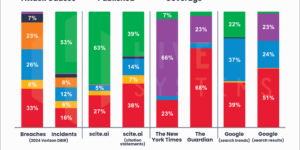Property-casualty insurance sector M&A deals jumped by more than 31 percent and deal value grew by more than half from 2013 to 2014 as carriers sought to diversify, remain relevant with customers and consolidate, Conning determined in a new report.
M&A activity also continued to strengthen in the 2015 first quarter, Conning said in its report, “Global Insurance Underwriting Sectors Mergers & Acquisitions: The Market Heats Up in 2014.”
Conning said the number of property/casualty M&A transactions soared 31 percent from 2013 to 2014, from 39 to 51. The value of property/casualty insurance M&A deals grew from $4.4 billion to $6.2 billion over the same period, reflecting a 52 percent expansion.
Conning noted that the sector saw a number of deals at the end of 2014 in particular, representing about half of the year’s total.
What drove property/casualty companies to merge? Carriers sought ways to be more relevant to customers and to expand their global reach. In the p/c reinsurance space, declining rates and strong inflows of alternative capital created a highly competitive environment in which M&A became a solution. Like insurers, reinsurers also sought to gain greater scale or diversify through acquisitions or being acquired, Conning said.
For the study, Conning looked at global M&A activity in the property/casualty, life-annuity and health sectors. Beyond the typical reasons companies merge (consolidation, a need to boost revenue), Conning’s findings show some sea changes among the broader insurance business climate, Jerry Theodorou, the report’s principal analyst, told Carrier Management via email.
He said that the M&A deals reflect an industry increasingly being shaped by factors such as innovation demands, new services, and “effective internal and external use of technology.”
Theodorou added that “the increasingly global-connected nature of business activity” and “a balance between scale-driven efficiency and specialty focus” have also emerged as factors behind an increased focus on M&A deals.
On a broader level across all insurance sectors, Conning said that government regulation also triggered M&A activity in 2014, particularly with European insurers that wanted to unload underperforming units to boost their capital levels.
“The results of 2014 Solvency II stress tests showing that close to 14 percent of European insurers do not have adequate capital levels, suggest that European insurance M&A is likely to pick up steam as we approach implementation of the new solvency regime in January 2016, Conning said.
Source: Conning




















 Four P/C Insurers Are ‘AI Titans’; AI Impact Leaders Revealed: Research
Four P/C Insurers Are ‘AI Titans’; AI Impact Leaders Revealed: Research  Surviving the ‘Silver Tsunami’: Closing the Talent, Skills Gap in Underwriting
Surviving the ‘Silver Tsunami’: Closing the Talent, Skills Gap in Underwriting  Carrier Management’s 2024 Top Features (Reader’s Picks Unlocked)
Carrier Management’s 2024 Top Features (Reader’s Picks Unlocked)  Dear Elon and Vivek: Insurance Commissioners Urge DOGE to Ditch FIO
Dear Elon and Vivek: Insurance Commissioners Urge DOGE to Ditch FIO 









